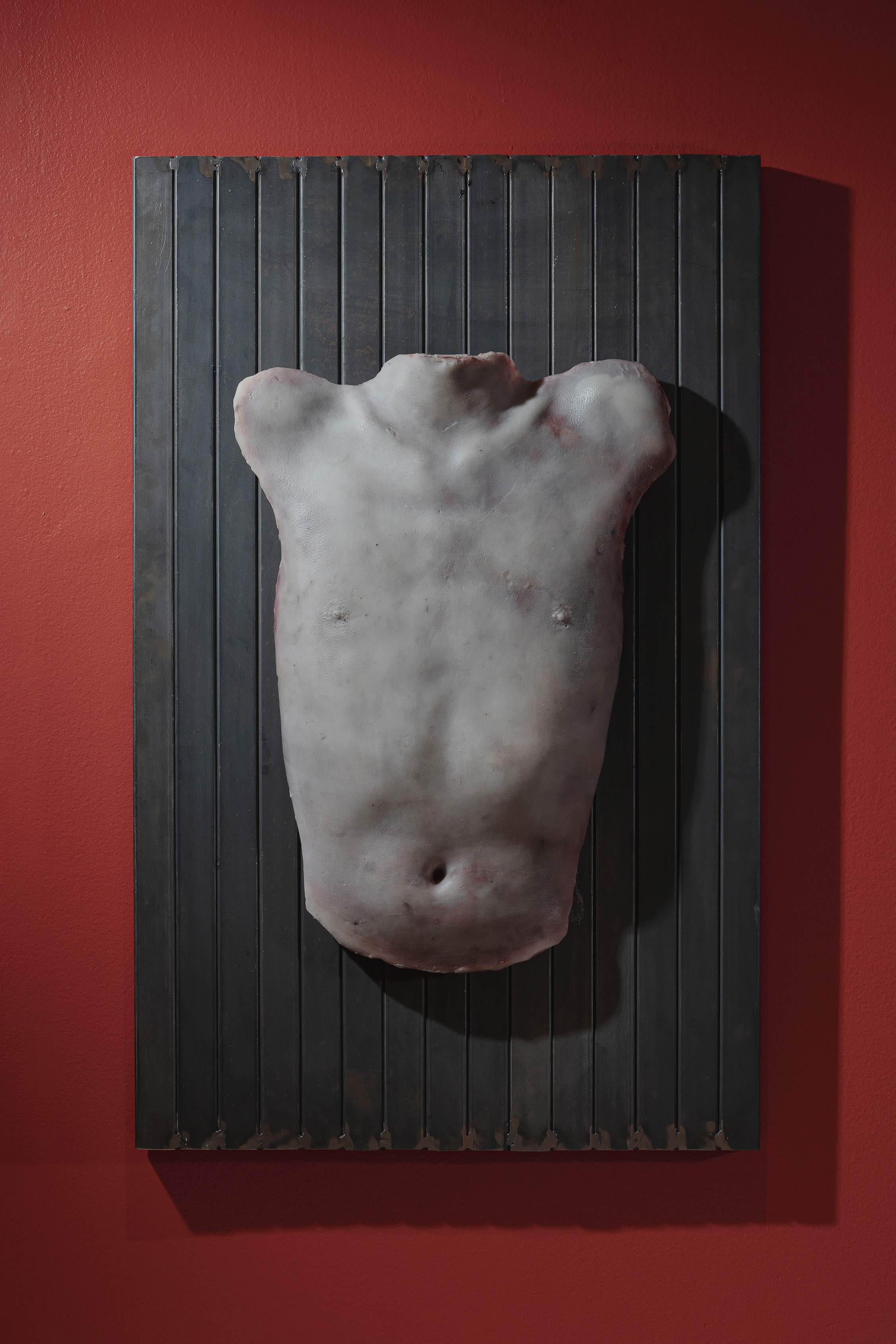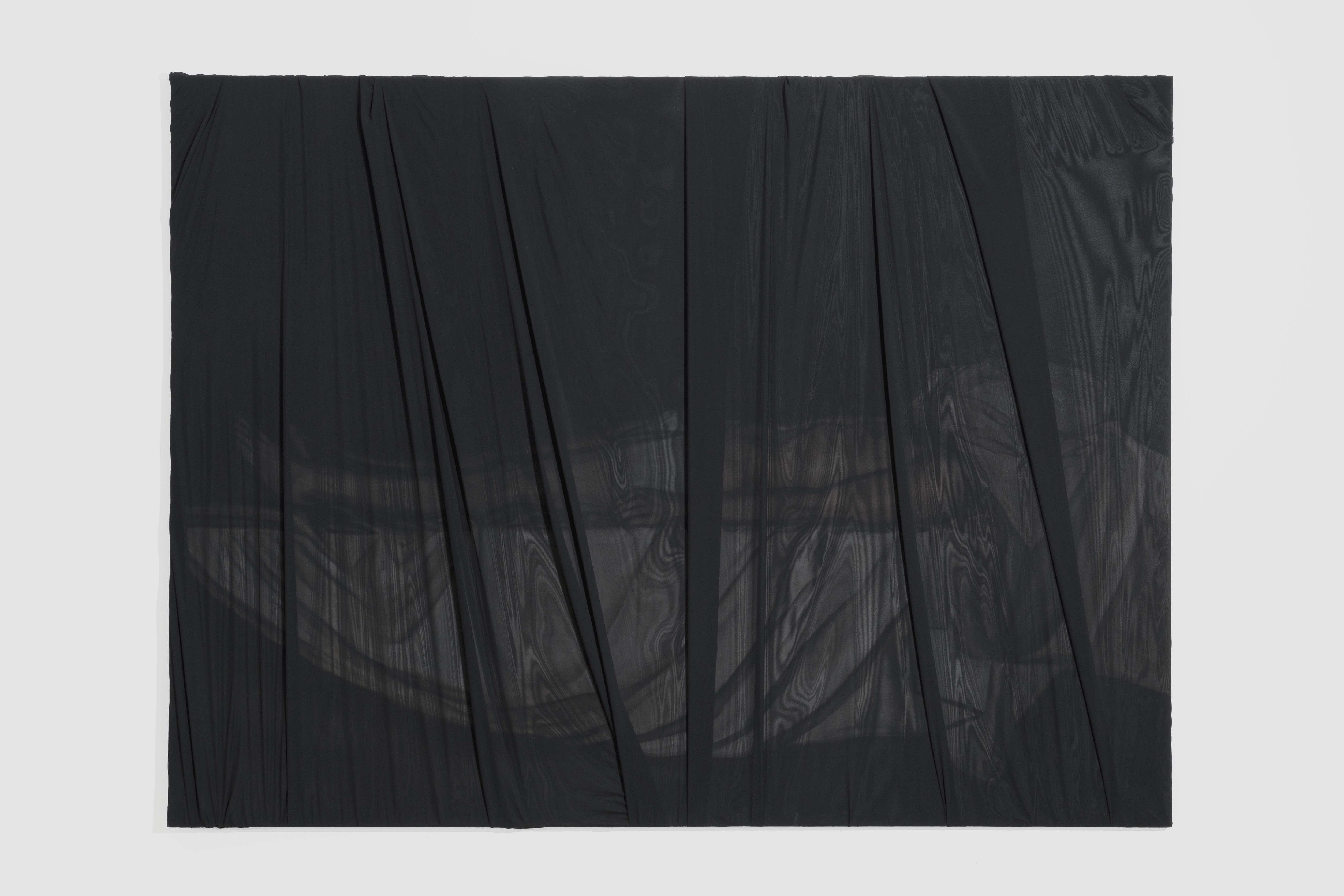
Review
A purely digital contemporary panoptism. Gabriel O'Shea at Hilario Galguera Gallery
by Nico Barraza
Reading time
7 min
I have read, heard, and sometimes thought that we live in
a victimizing society, one that maintains a complacent
confusion between the status of victim and that of heroes.
— Emmanuel Carrère, Chronique judiciaire
One Friday, after 3 PM, I went to Galería Hilario Galguera in order to visit the exhibition by Gabriel O’Shea, Preludio. The press release describes it as a reflection on the decline of spirituality and its replacement by fervor towards virtual spaces. The work of this Mexican artist has focused on reviewing the dichotomy and tensions between the divine and the mundane, between chaos and tranquility. Charged with realism, his production examines nihilism, violence, and decadence: all of these mirroring the current human condition.
For this project, the artist focuses on the digital environment; on the identity crisis that exists as the effect of a near-total dependence on technology; on the decline of belief systems; and on the spiritual market. O’Shea plants a question about the existential and the spiritual, analyzing the way in which the digital reformation has harmed and stagnated not only traditional idolatry, but also canonical requirements and formalities in the history of art. The use of contemporary media such as image-generating software is juxtaposed with that of classical media such as painting or sculpture. This confrontation among work tools extends the conversation around originality, transcendence, and cultural relevance.
I arrived at the gallery and went up the stairs as the initial silence began to dissipate: the inside sounded like a funeral march. Upon entering, I felt stunned and cautious, inside a kind of oratory where eight photographs are exhibited that establish a gloomy and dystopian scene: devout, full of subjection and somewhat diminished. Distant, but viable. Events that seem like evidence of forgotten presences, recollections of a memory in full erosion. At the other end of the room there is a metal base, one that in this context could well be considered a credence table: it shows a broken concrete leg, joined together with nails and silicon. The references to Catholic iconography are as clear as they are disfigured.

Gabriel O’Shea composes a story through materials such as wax and oil paint, wood and concrete, drawing benefits from dust and hair. In some cases he takes advantage of animal skin and discarded objects. His works are consolidated in the synergy and tension between the figurative and the conceptual, in the midst of the fragile and the rugged. Cada quien llevará su propia carga (“Everyone Will Carry Their Own Load,” 2022) confronts us as we enter the second space; we stand before a concrete torso hanging from a metal structure, jam-packed with nails. It can be associated with a lack of freedom, a permanent (self-)punishment, a hidden dominance that is highlighted by the masks surrounding it. Although it is related to religious worship, it also criticizes the blind veneration of technology: the second identity promised by social media, that life outside of life itself. The atmosphere is uncomfortable and eerie—but also captivating.
The series of plastic torsos titled Elegías (“You Choose,” 2022) appear as archaeological relics. Deformed molds of bodies stripped of identity and context that suggest a contemplation of loss and absence. Their amorphous condition leads me to think about the fragility of memory, about the tangled and disordered past that we take charge of by continually rewriting—as a way of finding protection or peace. Nevertheless, they are also shown as a metaphor for the historical continuity of violence. Such is its magnitude that we have become accustomed to outrage and cruelty, to the disappeared and the forgotten. It reminds me of what Artaud described as “the body without organs”: “The body is the body / it stands alone / it has no need of organs / the body is never an organism / organisms are the enemies of bodies.”*1

There are four more sculptures in this area, made of wax and inspired by religious scenes; however, they are again reduced to the torso. In fact, they are presented in a cage that resembles the gruesome Tennessee corpse farms: in two glass boxes waiting to be incubated and preserved. Finally, there is another one hanging on the wall, like a sacred vestige ready for adoration and admiration. In contrast with the rigidity of concrete and the malleability of plaster, the materiality of wax feels weak, deadly. The texture is so clear that it is impossible not to think that, in effect, we are seeing the epidermis of a being with tears and scars, with signs of disease and deterioration. Meat that still seems to be preserved, and yet little by little loses its velvety texture in order to become coarse, rugged. It would seem that those bodies become presences that announce and lament: that underline the inevitable.
The paintings appear to be a dream capture of whoever inhabits the post-apocalyptic disaster to which O’Shea has invited us. The influence of Goya and Caravaggio is evident, although the work has also reminded me of Francis Bacon and Enrique Ježik.*2 The chiaroscuro of the pieces illustrates a condition devoid of features, of individuality, but also of meaning or interest. Persons who are there, albeit not really. The figures lean on one another, in an act of protection or adhesion.

Who is one really in this technological purgatory? What place, if any, will be ours in the digital future? And above all: is it really necessary? Without a doubt, my favorite piece was La otra piedad (“The Other Piety,” 2021). When Gabriel paints that dying body, there is nothing that can cause fear or horror. In The Logic of Sensation (1981) Deleuze writes, “When sensation is linked to the body in this way, it ceases to be representative and becomes real; and cruelty will be linked less and less to the representation of something horrible, and will become nothing other than the action of forces upon the body, or sensation (the opposite of the sensational).”*3 In O’Shea’s painting it is not necessary to see the body or even to know the narrative behind its death. The curtain in front of the bed is not only a way of isolating it; rather, it announces it as unappealable. We have enough to look at from afar—and secretly. The artist manages, as Cézanne would say, to paint the sensation. It reminds us of our own temporary and passing condition, which should be confronted without fear and in the eyes.

Finally, the video piece Polifonía (quo vadis) (“Polyphony (quo vadis),” 2023) is a compilation of images that have been generated using artificial intelligence, a result of the interpretation of texts written by the artist. Disturbing scenes, men wearing chasubles and raincoats, wandering among ruins and fires. The religious solemnity of the past is faced with the skeptical and nihilistic character of the present, with disposable overalls and virtual reality. A nebulous and insatiable digital dystopia.
Whereas in previous exhibitions exposed brick or concrete walls added to the work’s desolation and decay, by moving them to a space like Hilario Galguera—predominantly a white cube—the meaning has mutated into the remains of a remote civilization. Presented within a clean, historical, and speculative context, they perhaps become a cautionary myth, a wakeup call. They are a clear reflection of a change that is needed more and more every day.
A purely digital contemporary panopticism. We observe and we are observed. Within any mechanism of terror and control that may exist, it also seems that the human being enjoys that visibility and validation that technology and virtual cultures cause—infinitely as well as momentarily.
Translated to English by Byron Davies
1: Antonin Artaud, The Body is the Body, trans. Roger McKeon (Los Angeles: Semiotext(e), 1977), pp. 38-9.
2: See Francis Bacon, Head VI (1949), Two Figures (1953); SEMEFO, work on the project Dermis (1996); and Enrique Ježik, En defensa propia (1996).
3: Gilles Deleuze, Francis Bacon: The Logic of Sensation (New York: Bloomsbury, 2005), p. 34.
Published on July 5 2023